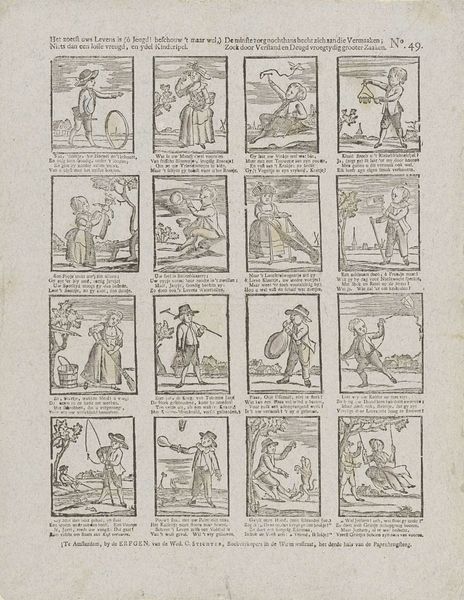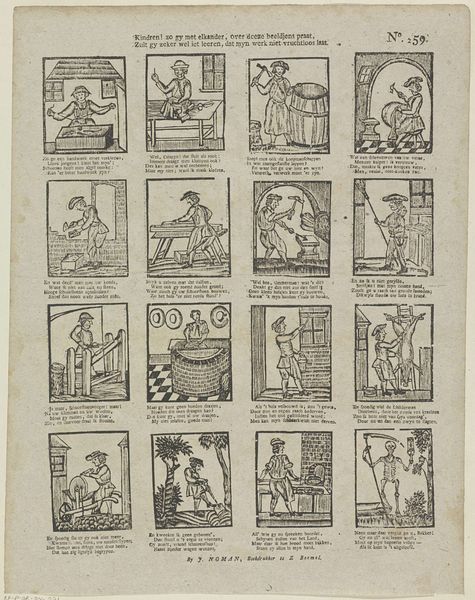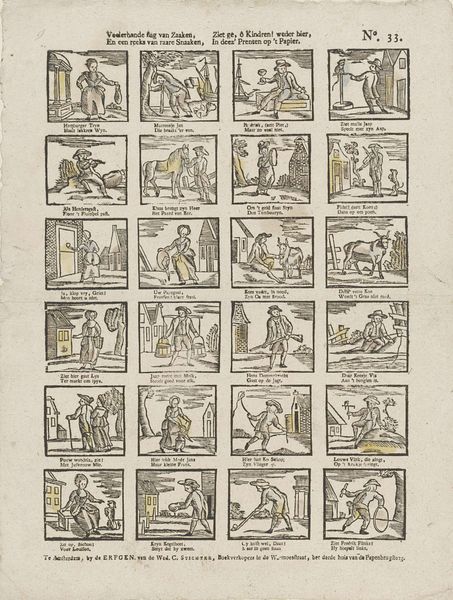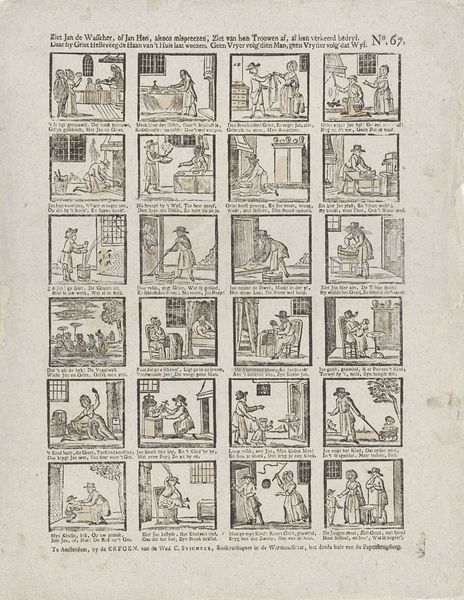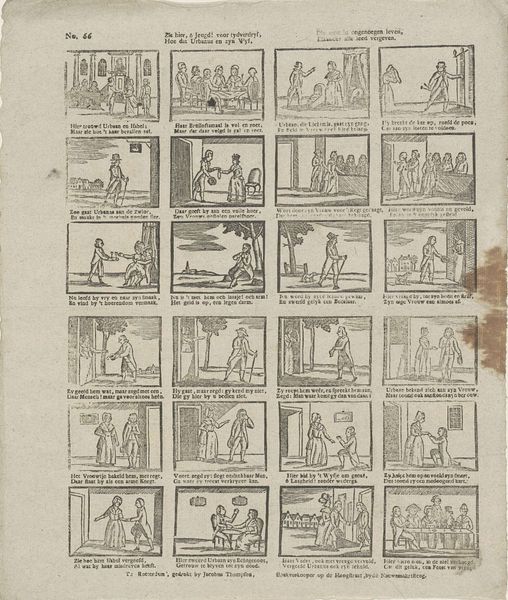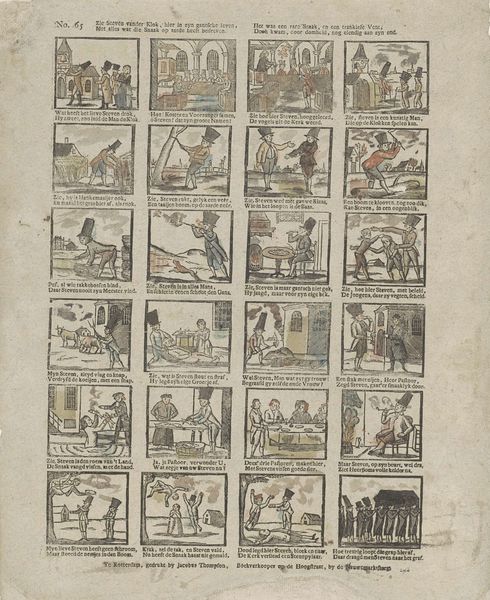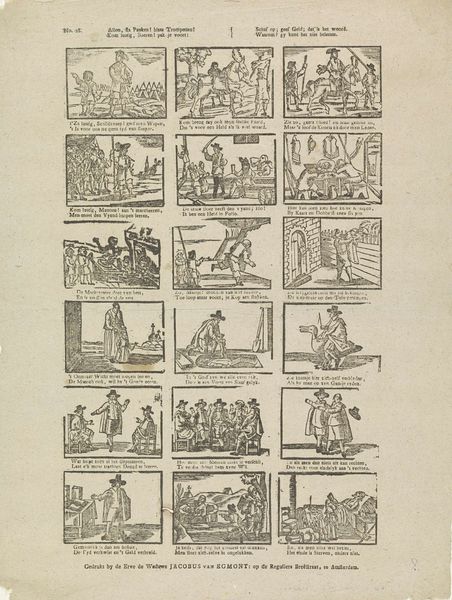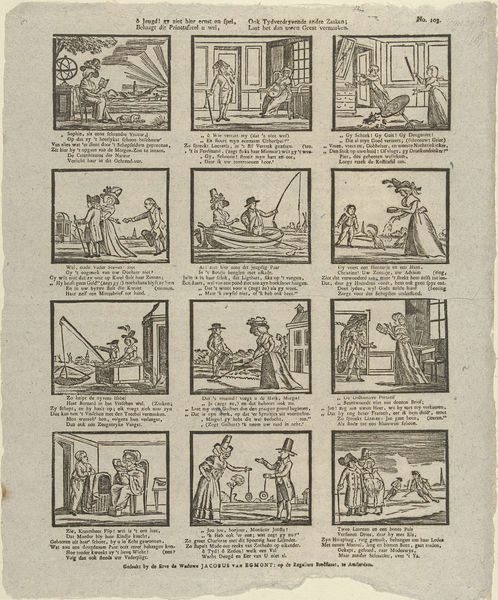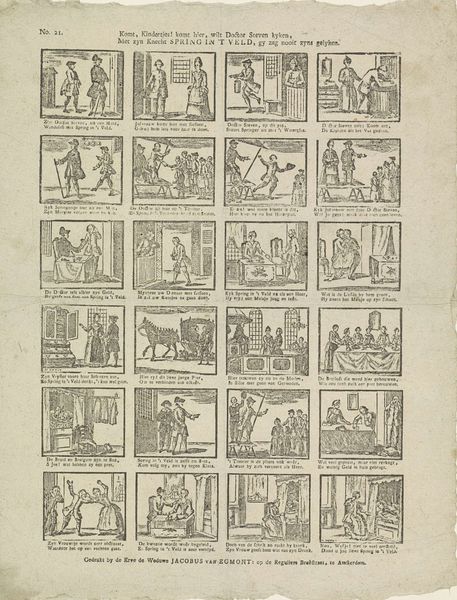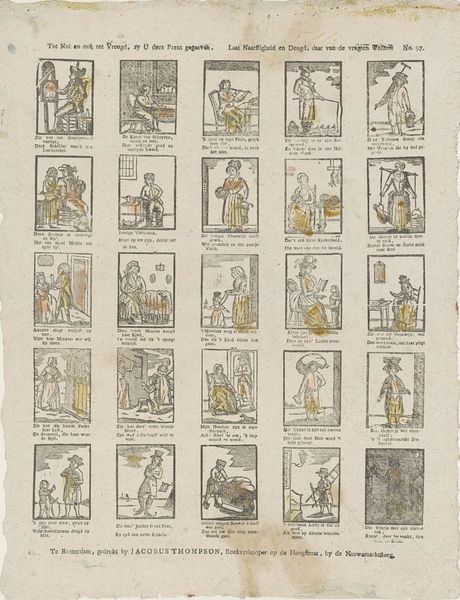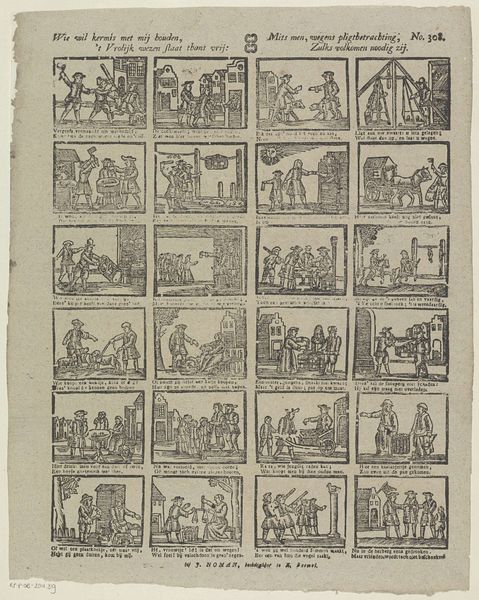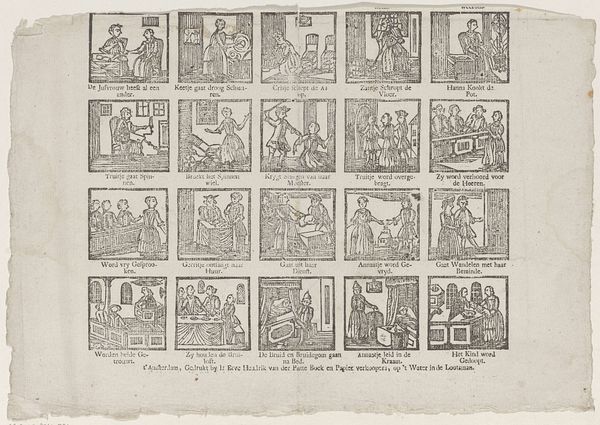
Kindren! zo gy met elkander, over deeze beeldjens praat, / Zult gy zeker wel iet leeren, dat myn werk niet vruchtloos laat 1715 - 1813
0:00
0:00
graphic-art, print, engraving
#
graphic-art
#
narrative-art
# print
#
genre-painting
#
engraving
Dimensions: height 391 mm, width 282 mm
Copyright: Rijks Museum: Open Domain
Curator: This is a fascinating print from between 1715 and 1813, titled with the rather lengthy "Kindren! zo gy met elkander, over deeze beeldjens praat, / Zult gy zeker wel iet leeren, dat myn werk niet vruchtloos laat," created by the heirs of the widow Cornelis Stichter. What is your first impression of the composition, Editor? Editor: Visually, it strikes me as a grid—a series of vignettes presented together. The line work is quite simple and the tones muted, which lends an almost storybook feel despite the rather stark subject matter in some of the scenes. Curator: Indeed. Each little scene provides insight into trades and lives. I am interested in how this piece engages with the rise of print culture, as a device for spreading ideas about labor. It reflects the Dutch Republic’s deep engagement with commerce and craftsmanship as well as everyday existence. Editor: Looking closer, one observes varying depths of tone in the simple crosshatching. The stark outlines remind me of basic geometric shapes, contrasting in different textures – a rough-hewn barrel, against polished metalwork and delicate fabrics. Curator: These types of prints offered accessible ways to teach life's important lessons. Notice, for example, the depiction of death in the final panel: perhaps suggesting an ending point for the cycle of life’s work. Editor: That memento mori aspect does resonate throughout the arrangement. It is fascinating how the artist balances that stark reminder with glimpses of everyday activity. A structural dichotomy which shapes the thematic rhythm. Curator: Furthermore, prints such as this had political resonance. The rising middle class had more and more involvement in arts appreciation as these forms became affordable and were aimed for consumption by younger audiences. It subtly promotes civic engagement and values within the domestic sphere. Editor: It provides an early engagement and reflection with one's path – almost in a secular way. From that formal viewpoint, I find that contrast exceptionally poignant in the overall framework. Curator: I agree; its arrangement, with its various depictions of labour, creates an enduring historical documentation about working life and society. Editor: And the aesthetic considerations deepen the narrative of those depicted workers – crafting a compelling window into past ages through an almost graphic quality of print and design.
Comments
No comments
Be the first to comment and join the conversation on the ultimate creative platform.
